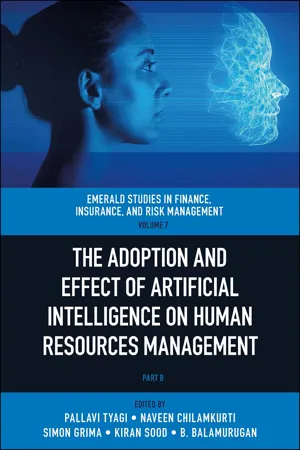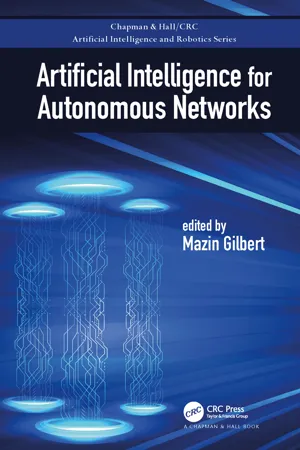Technology & Engineering
AI Engineering
AI engineering involves the application of engineering principles to the development and deployment of artificial intelligence systems. It encompasses the design, construction, and optimization of AI solutions, including machine learning models, algorithms, and data pipelines. AI engineers work to ensure the reliability, scalability, and efficiency of AI technologies in various applications.
Written by Perlego with AI-assistance
Related key terms
4 Key excerpts on "AI Engineering"
- eBook - ePub
Artificial Intelligence in Higher Education
A Practical Approach
- Prathamesh Padmakar Churi, Shubham Joshi, Mohamed Elhoseny, Amina Omrane, Prathamesh Padmakar Churi, Shubham Joshi, Mohamed Elhoseny, Amina Omrane(Authors)
- 2022(Publication Date)
- CRC Press(Publisher)
Other groups of definitions see AI in a much broader context, as a science; for example, Stone et al. (2016) say that “Artificial Intelligence (AI) is a science and a set of computational technologies that are inspired by—but typically operate quite differently from—the ways people use their nervous systems and bodies to sense, learn, reason, and take action” (Stone et al., 2016). The Oxford English Dictionary gives this definition: “The theory and development of computer systems able to perform tasks normally requiring human intelligence, such as visual perception, speech recognition, decision-making, and translation between languages”. Merriam-Webster Dictionary connects both previously mentioned aspects of Artificial Intelligence and defines it as a) a branch of computer science dealing with the simulation of intelligent behaviour in computers, and b) the capability of a machine to imitate intelligent human behaviour (Merriam Webster, 2018). In this chapter, we adopted the definition of AI given by Luckin et al. (2016) who define AI as computer systems that have been designed to interact with the world through capabilities (for example, visual perception and speech recognition) and intelligent behaviours (for example, assessing the available information and then taking the most sensible action to achieve a stated goal) that we would think of as essentially human. These computer systems include a wide range of technologies and methods such as machine learning, adaptive learning, natural language processing, data mining, crowdsourcing, neural networks and algorithms. 1.2 Artificial Intelligence and Human Activities According to Leontiev’s activity theory, human processes can be examined from the perspective of three levels of analysis which are hierarchically linked to each other: activity, actions, and operations. This three-level model of human processes provides a useful entry point for understanding AI and its potential impact on human activities - Pallavi Tyagi, Naveen Chilamkurti, Simon Grima, Kiran Sood, Balamurugan Balusamy, Pallavi Tyagi, Naveen Chilamkurti, Simon Grima, Kiran Sood, B. Balamurugan(Authors)
- 2023(Publication Date)
- Emerald Publishing Limited(Publisher)
Estevez, Garate, & Graña, 2019 ).The essential facets of AI are cognitive computing, natural language processing, computer vision, robotics, machine learning, deep learning, big data/data analytics, and neural networks (Barenkamp et al., 2020 ). Robots are fully or semi-automated machines that can carry out complex functions (Graetz & Michaels, 2018 ). Robots automated using AI have found use in various areas such as manufacturing, surgery, prosthetics, transport, laboratory research, and defence (Torresen, 2018 ). Advancements in AI are being applied to robotics to create autonomous systems with improved sensory–motor functioning (Rajan & Saffiotti, 2017 ). Furthermore, advances in machine learning and deep learning are also important elements of AI (Panesar, 2019 ). Machine learning refers to a system’s ability to examine data, identify patterns, and adapt intuitively (Bi, Goodman, Kaminsky, & Lessler, 2019 ). Deep learning, a type of machine learning, can examine videos, images, and unstructured data to create predictive models and intelligent algorithms (Janiesch, Zschech, & Heinrich, 2021 ). Its main objective is to process data, find connections between data, and generate inferences or results based on positive and negative reinforcement using artificial neural networks that imitate biological neural networks in the human brain (Sejnowski, 2020 ). These technologies have led to advancements in AI, including handwriting recognition, voice recognition, adaptive algorithms, and fingerprint scanning (N. Sharma, Sharma, & Jindal, 2021 ). Neural networks enable deep learning-based algorithms. AI systems can take large data sets, reveal patterns among the data, and answer questions using neural networks, which analyse data sets. Often, these systems find linkages and interpret meaning from unstructured data (Ripley, 2007 ). Cognitive computing aims to simulate the human thought process in a computer (Gergely & Ury, 2019- eBook - ePub
No-Code Artificial Intelligence
The new way to build AI powered applications (English Edition)
- Ambuj Agrawal(Author)
- 2023(Publication Date)
- BPB Publications(Publisher)
HAPTER 1What is AI?
Introduction
In this chapter we will go through the basics of Artificial Intelligence (AI ) and look at different types of AI systems. We will also discuss the basics of Machine Learning and understand different types of Machine Learning techniques such as Supervised Learning, Unsupervised Learning and Reinforcement Learning (RL ). Furthermore, we would look at some of the latest AI research and its impact on our day to day lives.Structure
In this chapter, we will cover the following topics:- Introduction to AI
- Types of AI Systems
- Introduction to Machine Learning
- Supervised Learning
- Unsupervised Learning
- Reinforcement Learning
- Bleeding Edge AI Applications
Objectives
After studying this chapter, you will be able to decide and implement relevant AI techniques on your projects. You will also learn about Machine Learning techniques that can be used for a variety of use cases and look at some of the latest advancements in the AI space.Introduction to Artificial Intelligence
AI refers to the capability of machines to take actions and make decisions without being explicitly programmed. It can also refer to the capability of machines that display features associated with the human brain such as problem solving and learning.In simple terms, AI is intelligence exhibited by machines. The ideal characteristic of AI is its ability to rationalize and take actions that have the best chance of achieving a specific goal. AI is a very broad field with many subareas and it involves the study of automated recognition, understanding of signals, reasoning, planning, decision-making, learning and adaptation.Many of the devices you use in your day to day life use some form of AI within them. From your refrigerator, smartphone, television, car, and so on use some form of AI to make decisions for you. For example, your refrigerator uses the temperature sensors to determine the cooling rate. Your smartphone uses AI to perform fingerprint recognition, battery saving and optimizing pictures. Your car uses AI to improve fuel efficiency, safety features and temperature control. - eBook - ePub
- Mazin Gilbert(Author)
- 2018(Publication Date)
- Chapman and Hall/CRC(Publisher)
Artificial intelligence (AI) plays a pivotal role in fueling autonomous networks with capabilities such as self-healing and closed-loop automation. Artificial intelligence requires significant investments in both hardware and software platforms to enable fast, scalable, and cost-effective solutions. This chapter will describe emerging hardware platforms, such as graphics processing units (GPUs) and Intel’s high-performance Xeon processors, and industry standard software frameworks, such as Hadoop, TensorFlow, and Spark. Additionally, we will discuss opportunities for fixed function acceleration of AI workloads.Section 8.2 presents an overview of AI system architecture, including statistical machine learning and deep-learning principles along with key use cases. Section 8.3 introduces the art of data science and end-to-end workflows. Section 8.4 shows machine- and deep-learning software frameworks, libraries, and primitives. Section 8.5 describes various hardware capabilities and their architectural fit for key use cases. Section 8.6 explores how AI software interacts with hardware for key workloads. And Section 8.7 summarizes new innovations and future research work in this area.8.2 ARTIFICIAL INTELLIGENCEMachine learning and AI have arrived in the data centers. The unprecedented compute capabilities and hardware acceleration techniques provide more computing horsepower to train machine learning systems, a process that involves enormous amounts of data crunching. Artificial intelligence is now transforming how data centers are built and operated while also powering every aspect of the Internet, and machine learning is transforming how developers build intelligent applications that benefit customers and consumers touching almost every aspect of our everyday lives.One of the most exciting aspects of AI is that it has the potential to revolutionize not just the computing industry, or the software industry, but really every industry that touches our lives. It will transform the society in much the same way as the industrial revolution—the technical revolution and the digital revolution altered every aspect of daily life. For developers, the expansion of the AI field means that you have the potential to apply your interest and knowledge of AI toward an industry that you’re also interested in, like music or sports or health care.
Learn about this page
Index pages curate the most relevant extracts from our library of academic textbooks. They’ve been created using an in-house natural language model (NLM), each adding context and meaning to key research topics.



